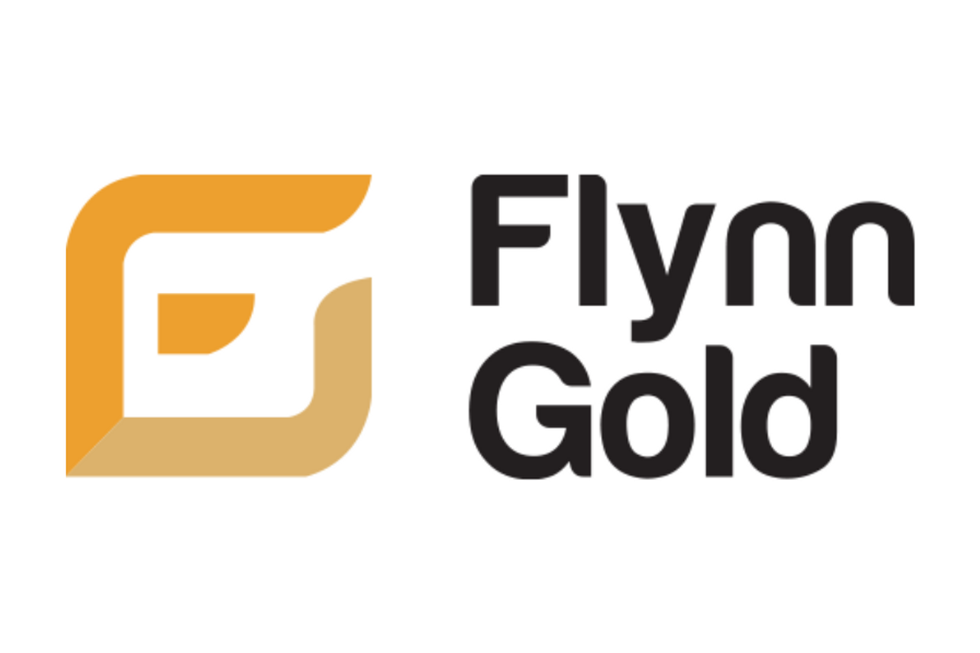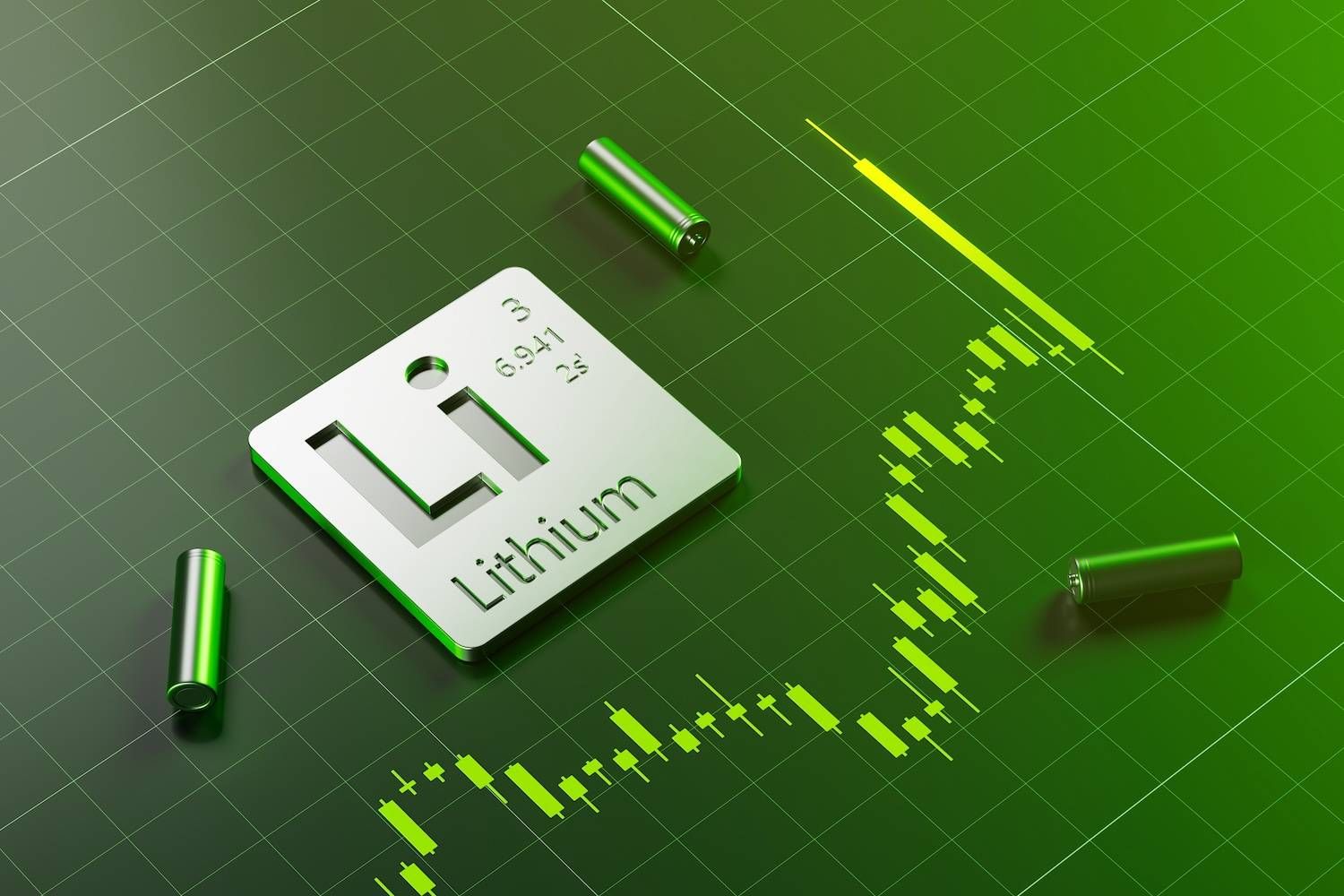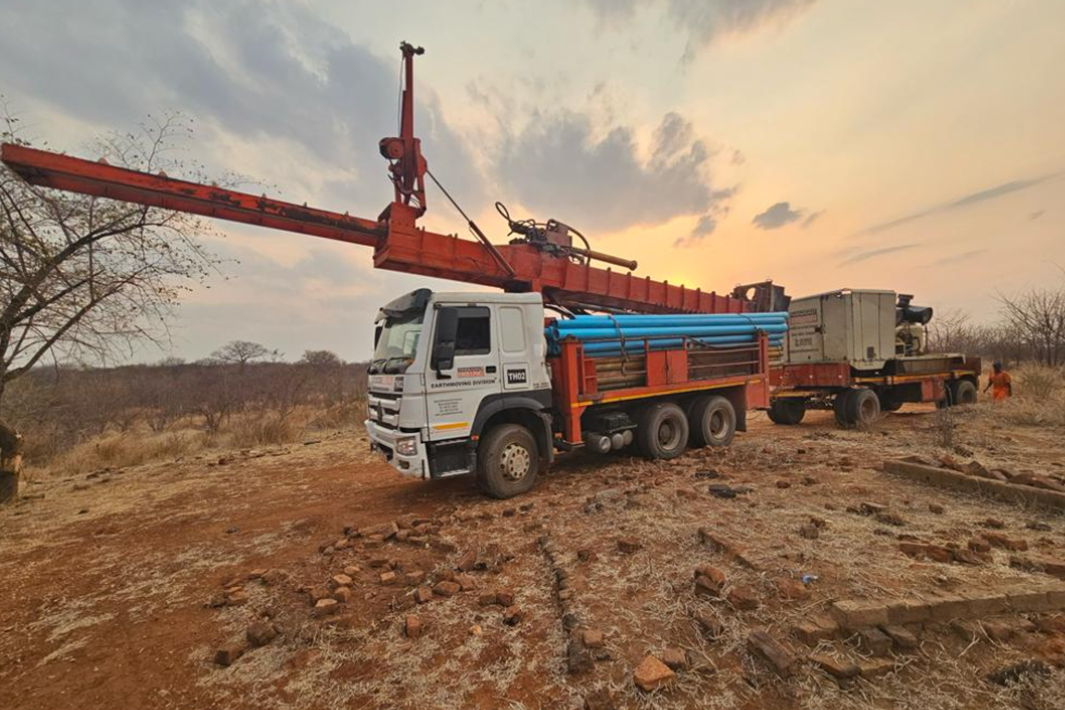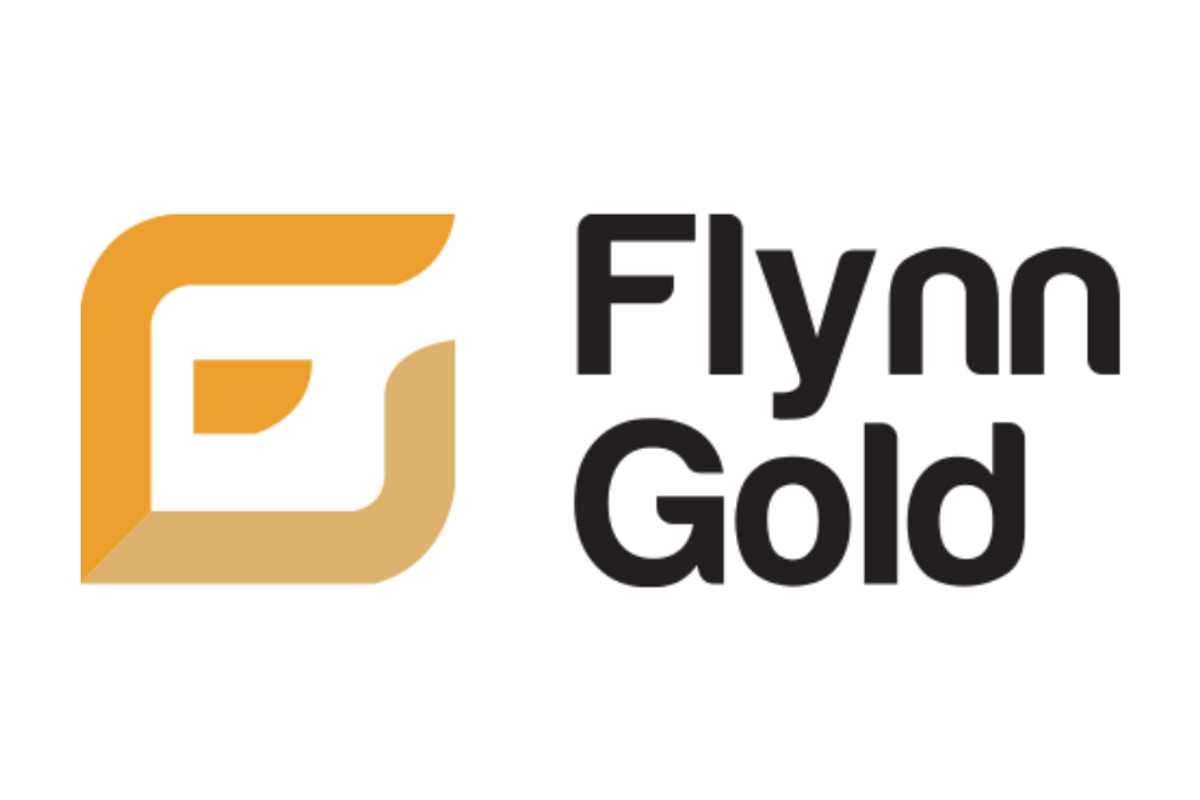
November 19, 2023
Flynn Gold Limited (ASX: FG1, “Flynn” or “the Company”) is pleased to announce results from its in-fill soil sampling program at its 100% owned Mt Dove lithium-gold project in Western Australia. The program was designed to evaluate multiple lithium and gold anomalies outlined from the Company’s 2022 Ultra-fine fraction (UFF) soil sampling program.1
Highlights
- Seven high priority lithium anomalies confirmed and enhanced by in-fill soil sampling at the Mt Dove Project in the Pilbara region of Western Australia
- Coherent lithium anomalies extend up to 3,100m length within predominantly shallow sand covered eastern part of licence area
- Outcropping pegmatite samples, with high rubidium (max 0.14% Rb) identified within the highest priority lithium anomaly
- Project located near world class Pilgangoora (ASX:PLS) and Wodgina (ASX:MIN) lithium mines and Hemi gold deposit (ASX:DEG)
- Mt Dove Project also near recent lithium pegmatite discoveries at Tabba Tabba (ASX:WC8) and Pippingarra (ASX:IND)
- Planning underway for design and permitting of a first pass aircore drilling program to cover high-priority targets
The Mt Dove project is located approximately 25km NNW of Mineral Resources’ (ASX: MIN) Wodgina Lithium Mine, 34km WNW of Pilbara Minerals’ (ASX: PLS) Pilgangoora Lithium Mine, 12km SE of De Grey Mining’s (ASX: DEG) Hemi gold deposit, 45km SW of Wildcat Resources’ (ASX: WC8) Tabba Tabba lithium deposit and 41km SSW of Industrial Metals’ (ASX: IND) Pippingarra lithium prospect in the Pilbara region (see Figure 1).
Managing Director and CEO, Neil Marston commented,
“The Mt Dove in-fill soil sampling program has confirmed seven broad areas of lithium and associated pathfinder element anomalism, highlighting the exciting lithium potential of the project.
“Flynn has recently commenced an accelerated work program on its Mt Dove, Lake Johnston and Forrestania lithium projects in Western Australia.”
“The projects are located close to world class lithium deposits and some exciting new discoveries including the Tabba Tabba and Pippingarra projects in the Pilbara and the Burmeister, Jaegermeister and Mt Gordon prospects in the Lake Johnston region.
“The aim of our fieldwork has been to identify pegmatite bodies across our tenements from mapping, sampling and target generation for drill testing. We look forward to providing updates to shareholders on our exploration progress including the plans for our first drill program.”
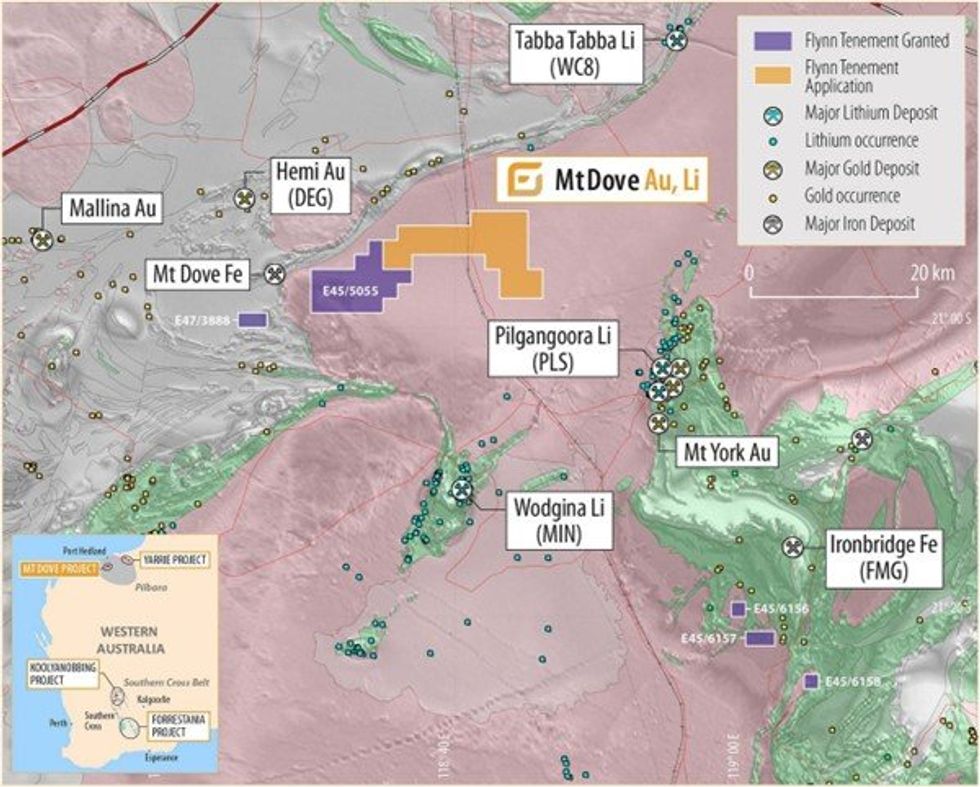
Soil Sampling Program
The results from an in-fill soil sampling program at the Mt Dove project (E45/5055) have been received and have outlined seven high priority coherent lithium anomalies with associated pathfinder geochemistry and eleven lower priority, less coherent lithium anomalies (Figure 2). The program has been successful in confirming and enhancing the seven high priority lithium geochemical anomalies and in providing further detail of the pathfinder zonation trends (refer to Table 1 and Appendix 1 for further details).
The seven high priority anomalies reveal broad areas of lithium soil anomalism extending between 600m and 3,100m in length and between 200m and 1,000m in width. The soil anomalies have been defined by clusters of samples which are greater than 75ppm Li (+160ppm Li2O) for the original UFF samples and greater than 21ppm Li (+45ppm Li2O) for the recent -2mm soil samples. These are considered significant anomalies particularly when taking into account the supporting associated pathfinder anomalism and trends (Figures 5 - 9).
Click here for the full ASX Release
This article includes content from Flynn Gold, licensed for the purpose of publishing on Investing News Australia. This article does not constitute financial product advice. It is your responsibility to perform proper due diligence before acting upon any information provided here. Please refer to our full disclaimer here.
The Conversation (0)
12 August 2024
Flynn Gold
Advancing three high-grade gold projects in Tasmania
Advancing three high-grade gold projects in Tasmania Keep Reading...
9h
Altius Minerals to Expand Portfolio with C$520 Million Lithium Royalty Deal
Altius Minerals (TSX:ALS,OTCQX:ATUSF) is making a bet on a lithium market recovery, agreeing to acquire Lithium Royalty (TSX:LIRC) in a C$520 million deal that will expand its exposure to battery metals.Under a definitive agreement announced by the two companies on Monday (December 22), Altius... Keep Reading...
23 December
Liontown's First Tjiwarl Member Completes Apprenticeship at Kathleen Valley
Liontown (ASX:LTR,OTC Pink:LINRF) has reached a milestone at its Kathleen Valley operations, with Vaughan Harris becoming the first Tjiwarl community member to complete an apprenticeship with the company.“Being the first Tjiwarl apprentice to complete an apprenticeship here at Liontown feels... Keep Reading...
22 December
Lithium Market 2025 Year-End Review
The global lithium market endured a bruising 2025, with persistent oversupply and softer-than-expected electric vehicle (EV) demand driving prices for the battery metal to multi-year lows.Lithium carbonate prices in North Asia slipped below US$9,550 per metric ton in February — their weakest... Keep Reading...
11 December
Mining the Gap: 5 Forces Shaping North America’s Lithium Supply Chain
A convergence of industry investments, government initiatives and a shifting global trade dynamic is creating an environment ripe for the development of a North American battery supply chain, with lithium playing a leading role. These trends are reshaping the region’s industrial base and opening... Keep Reading...
10 December
Rock Bottom: Strategic Window for Ground-level Lithium Investment
When lithium prices hit bottom, savvy investors know that’s exactly where the next big discovery begins — literally. Beneath the surface of global markets and remote exploration grounds, new opportunities are forming in the wake of a sharp price reset and renewed geopolitical urgency.Recent... Keep Reading...
10 December
Liontown Resources Pens Lithium Offtake Agreement with China's Canmax
Liontown Resources (ASX:LTR,OTC Pink:LINRF) has executed a binding offtake agreement with Chinese conglomerate Canmax Technologies (SZSE:300390) as part of its strategy to diversify its customer base.“Listed on the Shenzhen Stock Exchange, Canmax is one of the world’s leading manufacturers of... Keep Reading...
Latest News
Interactive Chart
Latest Press Releases
Related News
TOP STOCKS
American Battery4.030.24
Aion Therapeutic0.10-0.01
Cybin Corp2.140.00
